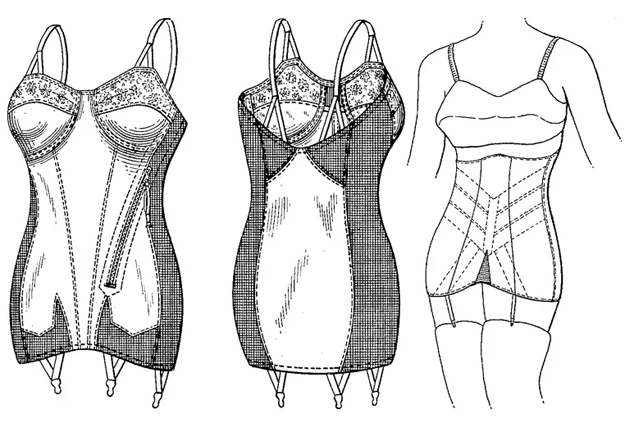
Starting from the 15th century in the French court, the popularity of corset clothing has lasted for nearly 600 years. The constant discovery of new materials, the innovation of silhouette and the rapid development of corset clothing have led to the gradual extreme of people’s restraint on the body.With the development and change of mainstream culture, corset fashion has been abandoned by the mainstream market. It is uncertain, not confident and not firm, and it is always zigzagging forward in exploring the beauty of the body.
In the late 19th and early 20th centuries, women longed for large, feminine breasts, and in the 1890s, the invention of the “lemon Cup” met this need.The two cups of the chest are stuffed with horse hair and springs. When worn, the springs of the corset are raised to create a full bust shape.
By 1910, designers were rejecting dresses with exaggerated curves.Fashion designers such as Paul Poiret, Lucile and Jacques Doucet favoured a slimmer, more “natural” figure, in contrast to the Edwardian curves that were in vogue at the time (exaggerated breasts, hips and a wasp waist).
Soft and sagging fabrics were used to make relatively loose and comfortable shirts and high-waisted dresses, and the popularity of these garments redefined the contours of the body in line with fashion aesthetics, making it unnecessary for women to create exaggerated body lines with extremely tight corsets.
The desire for comfortable underwear in the 1920s propelled the development of new types of underwear.In order to meet the needs of other activities, the corset with specific functions emerged.For example, the “tango” corset is worn on the hips, freeing the waist from the constriction of the girdle while dancing.
The First World War had a huge impact on the development of the corset, because women had to go out to work and they needed more movable underwear;At the same time, it is also because the outbreak of war has made people suffer from too much bondage and torture, at this time, people urgently get the liberation from the inside out.
As nifty short hair, lean breasts and small hips came into fashion, women’s clothing began to de-emphasize the feminine body, as did corsets. In the 1920s, women’s fashion moved to more masculine lines and boyish look prevailed.
The creation of a new material, nylon, changed underwear design.Nylon is light, soft, high toughness, and can be made into different yarn density fabric;On top of that, nylon’s good draping made it almost unnecessary to iron, making it ideal for making corsets, which is why almost all corsets at the time included it.
However, like the corset’s rapid popularity, as The Times went on, the corset almost disappeared from the market because of the turmoil in the world.The outbreak of the Second World War was followed by a general financial and political crisis, a great crisis leading to more crises, a vicious cycle that devastated the economy and depleted supplies, when corsets were a luxury.
The war ended in 1945, and although rationing was still used in the postwar years, it did not stop European women from showing off their femininity.
In 1947, In the fashion capital of Paris, Christian Dior introduced Dior New Style to women.The Times of London commented: “This is something that only Paris has dared to do. Instead of the one-piece corset, the girdle and padded underwear must be made in Paris (Jukes, 2012).”In the United States, Dior New Style was called “Surcingle,” a New Dio-style corset that evolved into the bra it is today.
Fashion magazines of the time said that your body wasn’t just a god-given body, that proper exercise and a proper corset made for an elegant figure, that exercise made for a healthy body, and that wise choices made for a good corset.
The decade saw a series of technological innovations, and the underwear revolution really began when dupont made Lycra.
Just as the corset grew in popularity quickly, so did its wear out of sight as The Times went on.Rather than striking sexy lines, they crave “nature” and health.In 2019, the wholesome Barbie image created by the popular lingerie brand Victoria’s Secret no longer “rules” body beauty, and perhaps people are embracing diversity wrapped in culture and beauty.
